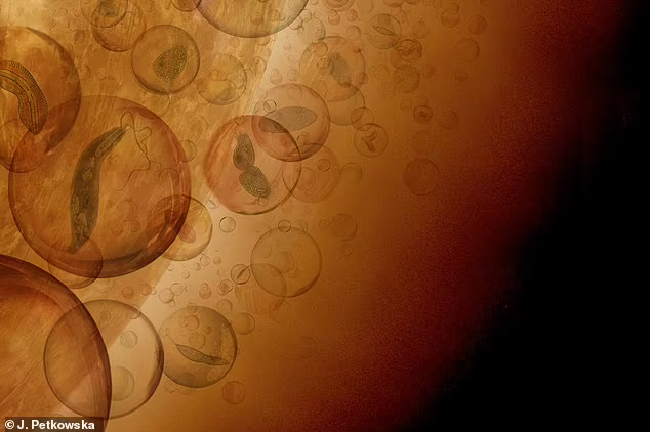Cambridge, Gatra.com- Alien life forms ‘unlike anything we’ve ever seen’ could live in habitable pockets in Venus’ clouds. That’s the claim of a study by Cardiff University, MIT and Cambridge University. Daily Mail, 21/12.
For nearly 50 years experts have been puzzled by the detection of ammonia in the clouds of the hellish planet. Ammonia gas must not be produced by any known chemical process on the planet.
Chemical modeling suggests that life may have created its own environment on Venus. With a thick carbon dioxide atmosphere and a surface hot enough to melt lead, it’s hard to imagine a world more inhospitable than our nearest planetary neighbour.
But now scientists think the planet could become ‘more habitable’ after identifying a chemical pathway by which life could neutralize Venus’ acidic environment, creating self-sustaining habitable pockets above the clouds.
Venus, the second planet from the sun, is a rocky world about the same size and mass as Earth. However, its atmosphere is very different from ours – being 96 percent carbon dioxide and having a surface temperature of 867°F (464°C) and a pressure 92 times that on Earth. Equivalent to pressure in the ocean depths of about 1 kilometer.
This inhospitable planet is shrouded in sulfuric acid clouds that make its surface impossible to see at a glance. In the past, it has been suggested that Venus may have oceans similar to Earth’s – but these will evaporate as they experience a runaway greenhouse effect.
The surface of Venus is a dry desert, which is periodically changed by volcanic activity.
For nearly 50 years scientists have been baffled by the presence of ammonia, a colorless gas made of nitrogen and hydrogen, which was tentatively detected in Venus’ atmosphere in the 1970s. The crux of the confusion is that it must not be produced through any known chemical process on the hell planet.
In a new study by Cardiff University, MIT and Cambridge University, researchers modeled a series of chemical processes to show that in the presence of ammonia, the gas would create a cascade of reactions that would neutralize the surrounding sulfuric acid droplets.
If that was the case, then the cloud’s acidity would drop from -11 to zero, which, although still very acidic on the pH scale (pH neutral 7), is a level that has the potential for life to survive.
As for the source of the ammonia itself, the authors believe the most plausible explanation is a biological origin, not lightning or volcanic eruptions. This chemistry shows that life can create its own environment on Venus. “No life that we know of can survive on Venus,” said study co-author Sara Seager of MIT.
“But the point is, maybe there is life there, and it’s modifying the environment to make it habitable,” he said. The researchers say their hypothesis could soon be tested with a proposed Venus mission, such as the Venus Life Finder which will be launched in 2023. If they find life in the clouds of Venus, then there is heaven on the roof of hell.
If so, the living thing is most likely a microbe similar to the bacteria found on Earth. Professor Seager added: “Ammonia shouldn’t be on Venus.”
“It has hydrogen attached to it, and there’s very little hydrogen around it. Any gas that doesn’t fall within its environmental context is automatically suspiciously made by life.”
The presence of ammonia could explain most of the major anomalies seen in Venus’ clouds, the researchers said. On our planet, ammonia is a common residual waste from aquatic organisms.
In fact, the team noted that there are life forms on Earth – particularly in the bowels of the Earth – that produce ammonia to neutralize and make a highly acidic environment habitable.
Study co-author Dr William Bains, from Cardiff University’s School of Physics and Astronomy, said: “We know that life can grow in an acidic environment on Earth, but nothing is as acidic as Venus’s clouds believe.”
“But if there’s something that keeps ammonia in the cloud, then it will neutralize some of the droplets, making them potentially more habitable.”
Hopes of finding life on Venus had previously been dashed after a study published in July this year claimed that phosphine gas originally thought to be of microbial origin could actually be produced by volcanoes.
In September 2020, a research team led by Cardiff University experts reported that they had detected a small amount of gas in the planet’s acid cloud.
Phosphine is often released by microorganisms on Earth that do not use oxygen to breathe, leading researchers at the time to speculate that Venus may harbor life.
Recent studies have been published in the journal Proceedings of the National Academy of Sciences.
–


